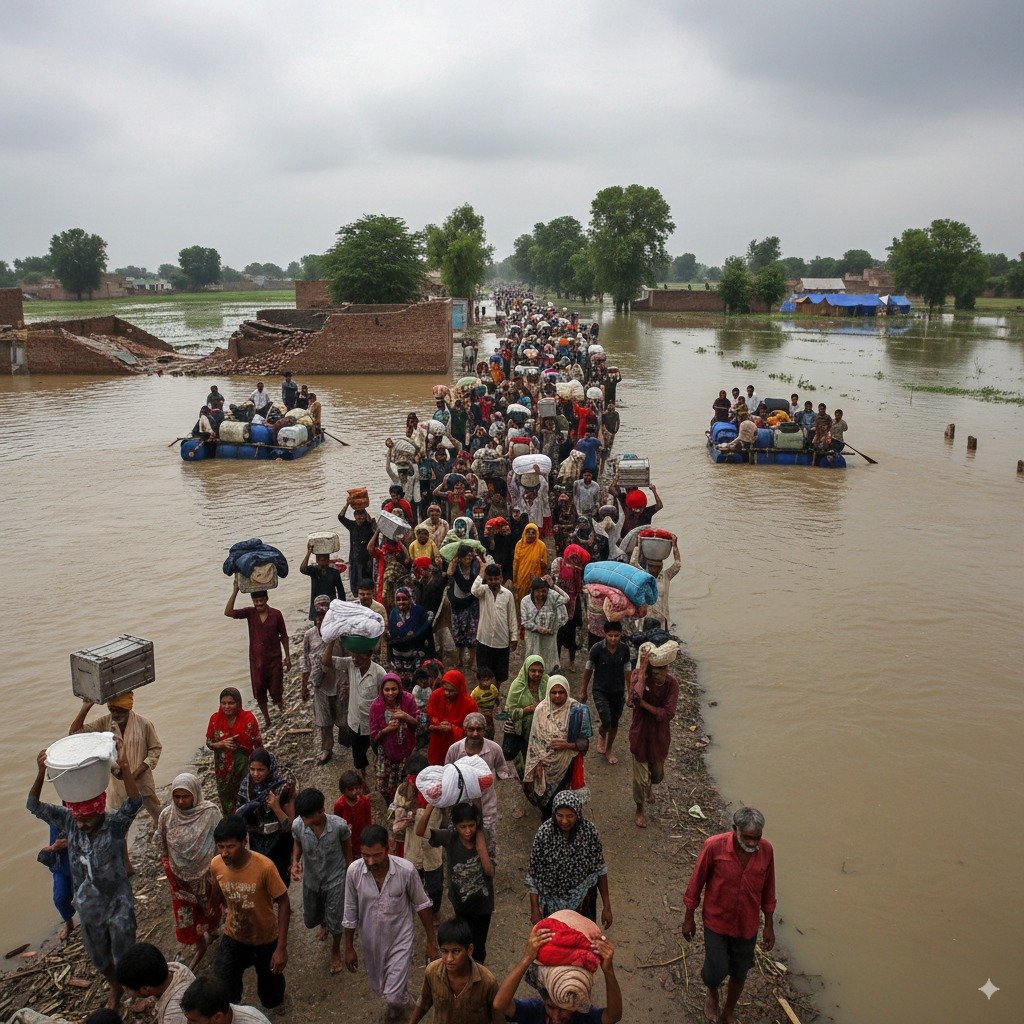Flash Flooding in Punjab Forces Mass Evacuations: Over 300,000 Displaced in Just 48 Hours
Unprecedented Crisis
Punjab is facing one of its worst flood emergencies in decades. In just 48 hours, more than 300,000 people have been evacuated, pushing the total displacement figure since late August to well over 1.3 million. Torrential monsoon rains combined with surging river levels have left vast stretches of the province submerged, forcing entire communities to flee their homes.
The Scale of Devastation
The disaster has impacted more than 3 million people across thousands of villages. Entire towns have been cut off, agricultural land has been destroyed, and roads and bridges have collapsed under the sheer force of floodwaters. Relief camps, though established in large numbers, are struggling to accommodate the influx of displaced families. Only a fraction of the affected population has found shelter, while countless others remain stranded in dire conditions.
Humanitarian Emergency
The situation in temporary shelters is deeply concerning. Families are squeezed into overcrowded spaces with limited access to food, clean water, and electricity. Power outages have left many vulnerable in the sweltering heat, with health risks such as waterborne diseases and infections growing by the hour. The lack of medical supplies and proper sanitation further threatens the wellbeing of children, the elderly, and those with chronic illnesses.
Agriculture and Livelihoods at Risk
Punjab, the backbone of Pakistan’s agriculture, has seen entire farmlands submerged under floodwaters. Crops of rice, sugarcane, maize, and cotton have been wiped out, dealing a severe blow to the rural economy. Livestock losses are mounting as farmers struggle to save their animals. With agriculture tied directly to food supply and exports, the floods pose a serious threat to both national food security and economic stability.
Massive Rescue Operations
Authorities have launched large-scale rescue missions, deploying boats, drones, and military support to evacuate stranded families. Over 500 relief camps and medical centers have been set up, with teams working round the clock to deliver aid. Yet, the sheer magnitude of the disaster means thousands are still awaiting help. Drones have proven vital in identifying villages cut off by floodwaters, but reaching them remains a challenge as infrastructure collapses.
The Bigger Picture
This flooding is being described as the worst in Punjab’s history, surpassing the devastation of previous years. Beyond the immediate humanitarian crisis, the economic toll could be staggering. With key crops lost and cotton-dependent industries at risk, Pakistan’s textile sector may face supply chain shocks. Rising food prices and inflation are likely to follow, compounding hardships for ordinary citizens.
A Climate Wake-Up Call
Experts warn that such extreme weather events are becoming more frequent, serving as a harsh reminder of Pakistan’s vulnerability to climate change. The scale of devastation has reignited calls for better disaster management systems, stronger flood defenses, and urgent climate adaptation measures.
What Lies Ahead
As floodwaters continue to spread, the immediate priority remains saving lives and ensuring access to basic necessities. However, once the water recedes, Punjab will face the daunting task of rebuilding homes, restoring farmland, and rehabilitating millions of lives. For now, the people of Punjab remain caught in a fight for survival—waiting for relief, and hoping for resilience in the face of disaster.



